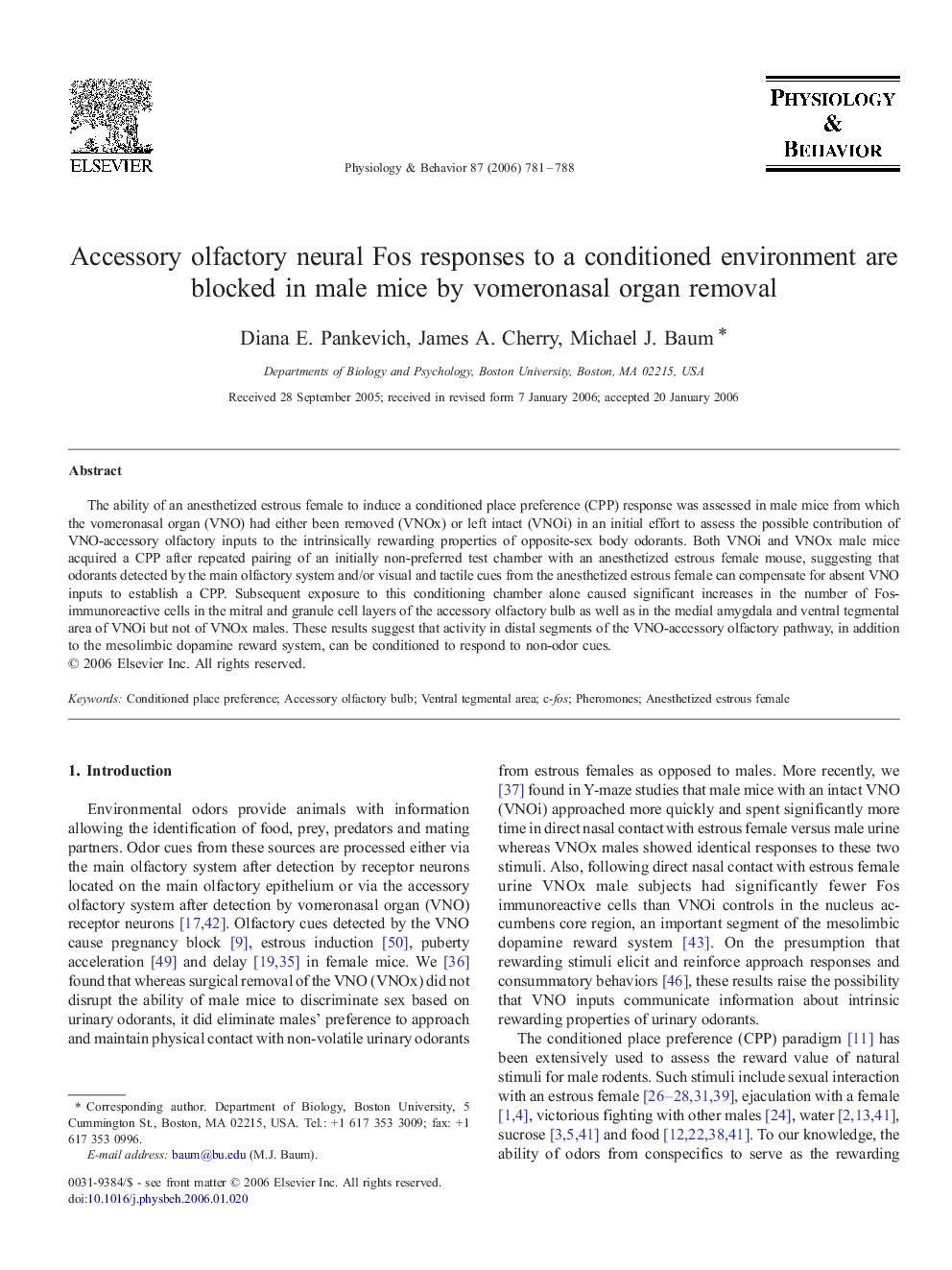| Article ID | Journal | Published Year | Pages | File Type |
|---|---|---|---|---|
| 2846317 | Physiology & Behavior | 2006 | 8 Pages |
The ability of an anesthetized estrous female to induce a conditioned place preference (CPP) response was assessed in male mice from which the vomeronasal organ (VNO) had either been removed (VNOx) or left intact (VNOi) in an initial effort to assess the possible contribution of VNO-accessory olfactory inputs to the intrinsically rewarding properties of opposite-sex body odorants. Both VNOi and VNOx male mice acquired a CPP after repeated pairing of an initially non-preferred test chamber with an anesthetized estrous female mouse, suggesting that odorants detected by the main olfactory system and/or visual and tactile cues from the anesthetized estrous female can compensate for absent VNO inputs to establish a CPP. Subsequent exposure to this conditioning chamber alone caused significant increases in the number of Fos-immunoreactive cells in the mitral and granule cell layers of the accessory olfactory bulb as well as in the medial amygdala and ventral tegmental area of VNOi but not of VNOx males. These results suggest that activity in distal segments of the VNO-accessory olfactory pathway, in addition to the mesolimbic dopamine reward system, can be conditioned to respond to non-odor cues.
